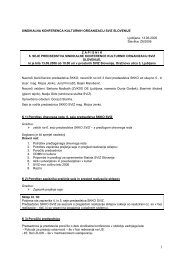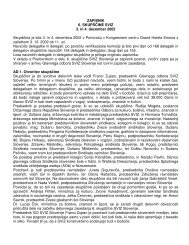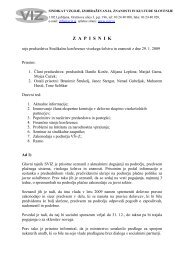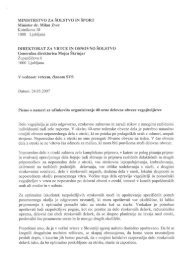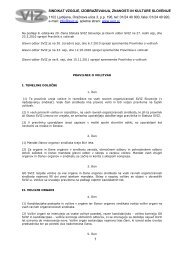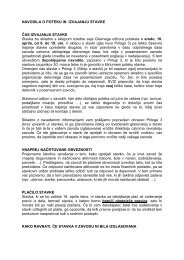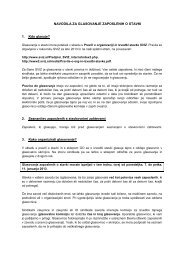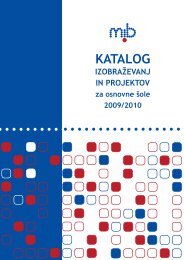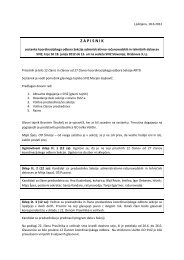Create successful ePaper yourself
Turn your PDF publications into a flip-book with our unique Google optimized e-Paper software.
‘historical’ stance can undoubtedly be found in Webern’s study of musicology<br />
– in 1908 he completed a doctoral dissertation on the works of the master of<br />
early music, Heinrich Isaac. A decisive event in Webern’s compositional development<br />
was most certainly his meeting Arnold Schoenberg, who became<br />
both his compositional mentor and a close friend. Just a few weeks before<br />
this fateful meeting Webern had completed his youthful orchestral work Im<br />
Sommerwind (In the Summer Wind), a composition that did not receive its<br />
first performance until 1962. The manuscript of this work was found by the<br />
composer’s biographer, Hans Moldenhauser, while investigating the estate of<br />
the widow of Webern’s son. This early work sheds particular light on the development<br />
of the composer’s musical language. It is written in the characteristic<br />
style of the modern: the composer employs the rich colours of an expanded<br />
symphony orchestra, the harmonies are tonal but extremely extended and<br />
a rich expressiveness prevails. In his work the composer relies a great deal on<br />
the extensive poetry of German social philosopher and liberal thinker Bruno<br />
Wille. However, various musical influences seem even more important than<br />
these poetic impulses: in the rich orchestration it is possible to distinguish the<br />
fingerprints of Richard Strauss, the subtitle (‘Idyll’) and atmosphere bring to<br />
mind the ‘Forest Murmurs’ from Wagner’s Siegfried, while the fragmentary<br />
working with melodic material is similar to procedures employed by Gustav<br />
Mahler. Nonetheless, even in this youthful work – the composer completed<br />
it at the age of only twenty – it is still possible to discover certain traits that<br />
mark his mature opus: the orchestration is grandiose but contains certain<br />
special features (Webern calls for five clarinets but only two bassoons, as well<br />
as six horns but no trombones), while even more striking is the incongruence<br />
between the intermittent melody and the overflowing orchestration. Thus<br />
even at the beginning of his creative path Webern’s attention is focused on<br />
the melodic fragment and sonic colour.<br />
It is precisely between Brahms and Webern that Gustav Mahler takes his<br />
place in the historical development of music. The composer’s First Symphony<br />
has a special position in this development, as it marks the beginning of the<br />
era of the modern, a period in which composers had already taken on board<br />
the new aesthetic postulates but not yet the new compositional techniques.<br />
Mahler began planning his first symphonic work in 1885 while working in<br />
Kassel. It was completed in 1888 in Leipzig and given its premiere performance<br />
one year later in Budapest. He initially planned the work as a symphonic<br />
poem in two parts with the subtitle ‘Titan’, taken from the novel of the same<br />
name by Jean Paul. However, the composer later modified the construction<br />
of the work to a large extent: he discarded the second movement (‘Floweret’),<br />
changed the orchestration and rejected the poetic <strong>program</strong>me, although we<br />
nonetheless cannot deny certain extra-musical associations. Thus even the<br />
slow introduction, with its floating tone of ‘a’ spread throughout the entire<br />
orchestral spectrum, presents us with a picture of a static natural landscape<br />
in which resound the echoes of bird calls and a distant fanfare, a series of<br />
fourths that will later reveal themselves to be the main thematic material<br />
of the work. There follows a faster section in which Mahler makes use of the<br />
PROGRAM / PROGRAM<br />
19




